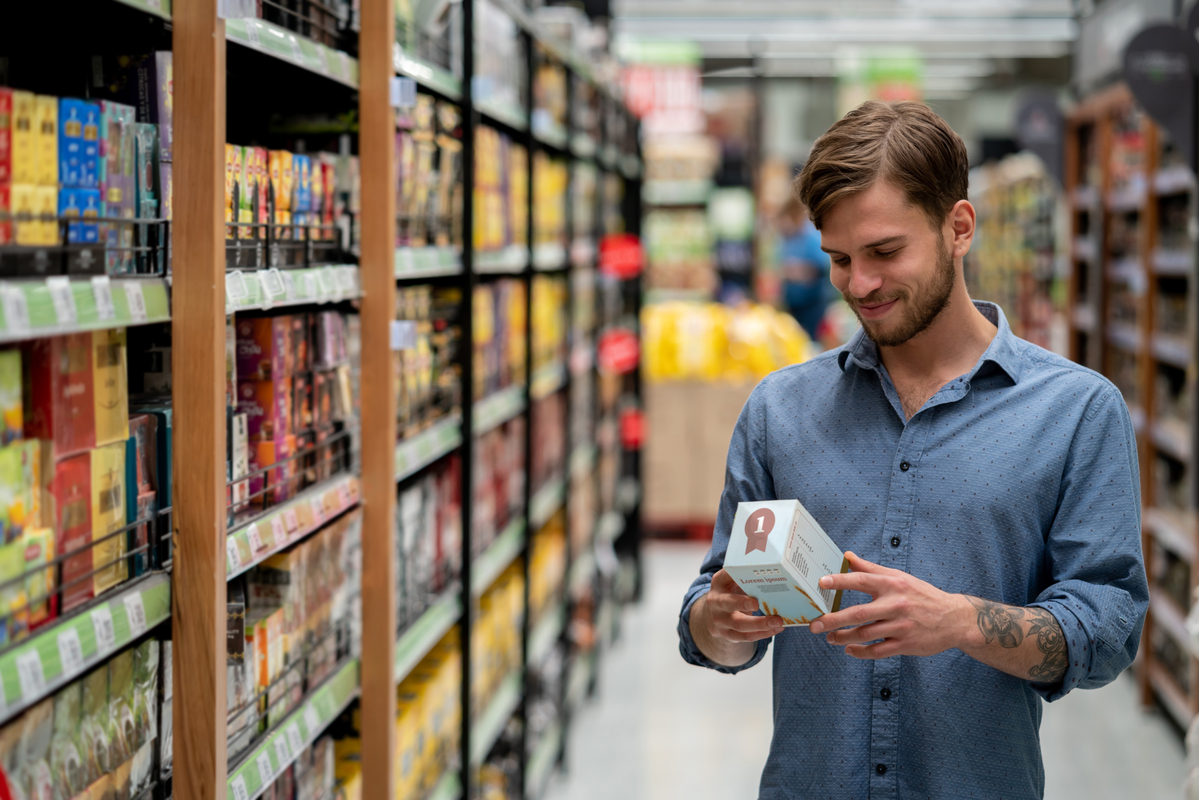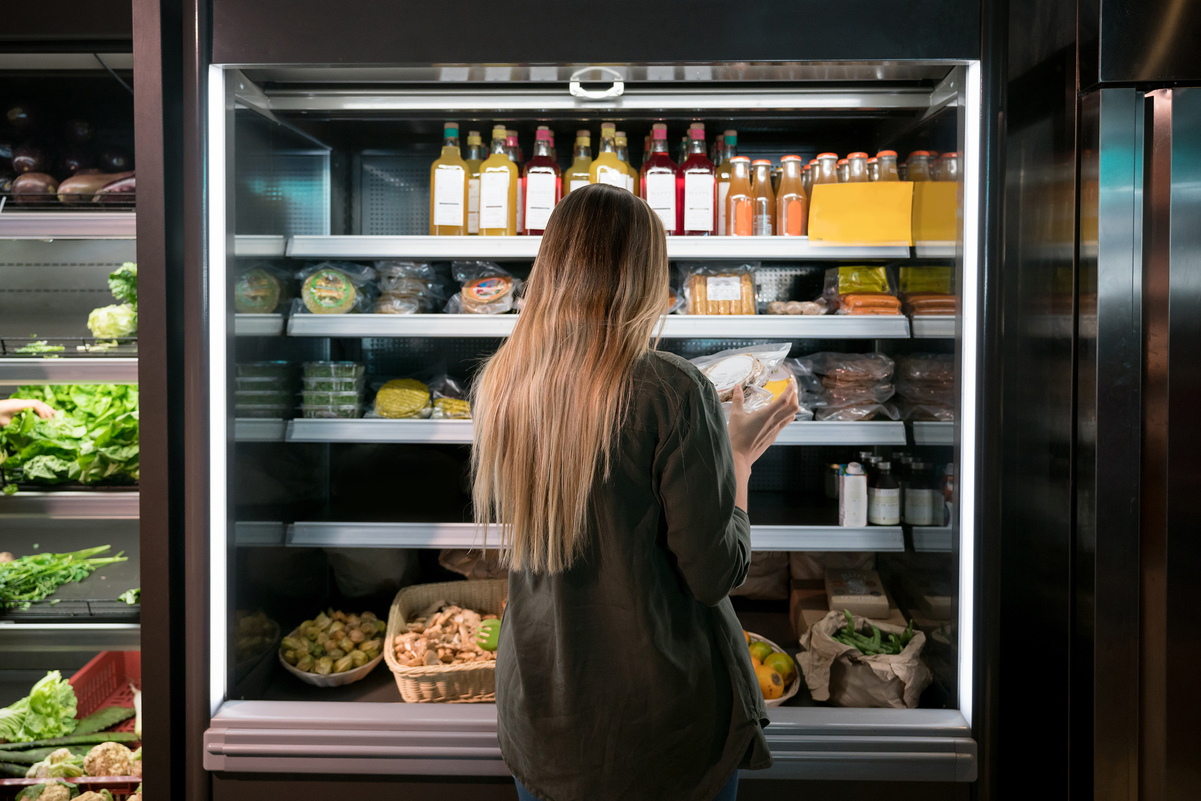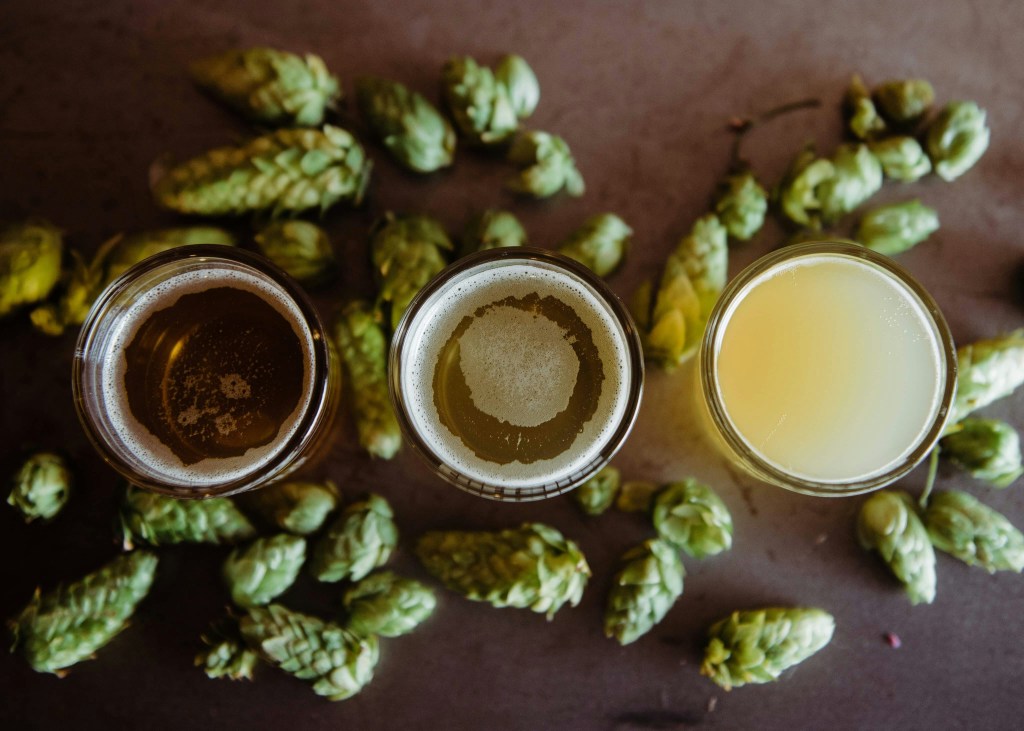What are the top food and beverage trends?
As we’ll see, consumers are becoming savvier about how and why their food is made. Gone are the days of avoiding labels and taking deep dives into the manufacturing and production processes. People are focused on sustainability, eco-friendliness, and all-natural ingredients.
Let’s break down these top seven trends, one by one.
1. Plant-based foods
If you pay attention to trendy social media pages, vegetarianism and veganism seem like they’ve taken over the world. You can’t scroll for more than 30 seconds before seeing some recipe or image of plant-based foods.
However, despite what social media tells you, the number of hardcore vegans and vegetarians hasn’t increased substantially. A recent survey showed that only 3% of U.S. adults identify as a vegan, which is only slightly higher than the 2% figure from 2012. That said, NielsenIQ search data shows that the term “vegan” is the second-most searched snack term, and the seventh-most searched for across all online grocery shopping websites. Unfortunately, most grocery stores don’t optimize for these terms, leaving consumers to fend for themselves accordingly. For example, “vegan” is unclaimed up to 76% of the time in the snack category, and 67% overall.
That said, it seems that many consumers want to incorporate vegetarian and vegan dishes into their lives without converting altogether. So, while the number of vegans isn’t increasing, the demand for plant-based food is. According to NielsenIQ, the demand for plant-based products increased 12% between 2020 and 2021. Likewise, meat alternatives saw an 11% jump.
Examples can include vegan cheese, meat-free “meats”, and alternative milk products. Cauliflower is especially having a moment, as people are using it for everything from mashed potato alternatives to pizza crusts.
2. Responsible sourcing
Looking at a label isn’t enough—consumers want to know exactly how their food got from the farm to their plate. Factory farming is still prevalent, but most people want ethically sourced ingredients, particularly when it comes to meat. Free-range cattle and chickens are more desirable than those who grow up without green pastures and sunlight.
While there is still plenty of room for trial and error, most consumers want to see companies making a concerted effort to source everything as responsibly as possible. Ideally, you can put evidence on the packaging to illustrate your commitment to this mantra.
Some specific attributes that customers care about include:
- Biobased Packaging Claim Certifications
- Eco-Friendly Certified
- Reef Safe (i.e., seafood products)
- Biodegradable Packaging Claim Certification
- Fair Trade Claim Certification
- Sustainable Farming Certification
There are tons of similar attributes, all of which CPG manufacturers can get data for through the Byzzer platform.
Consumers pay attention to these attributes for both themselves and their dependents. For example, some shoppers want to make sure that baby food is healthy and sustainable, while others scrutinize pet food products the same way.

Get the Low-down on Pricing & Promotion Optimization
In our free eBook, we share some of the most important factors impacting CPG brands and their pricing strategies, how to overcome them, and the tools available for them to use as they take a closer look.
3. Casein-free diet
Dairy intolerance is pretty prevalent in the U.S., with over 30 million people having an allergic reaction to lactose in dairy products. Casein is a protein in dairy that can trigger an allergic reaction. So, some consumers need to avoid it at all costs. We’ve already seen the explosive growth of “natural” products, but now we’re shifting toward specialty-diet offerings as well.
What’s crucial to remember is that casein-free is not the same as dairy-free. A casein-free product can still have other dairy elements like lactose, so buyers have to know the difference. Overall, while dairy-free means there is no casein, casein-free doesn’t mean there is no dairy.
4. Homemade convenience
Today, we all have the combined knowledge of the world at our fingertips. This means more people are venturing outside their normal boundaries while still staying at home. The rise of home delivery meal kits like Hello Fresh and Home Chef shows that consumers want to make better dishes in their own kitchens. However, since the average person isn’t trained, they need guidance to ensure that they don’t make their food inedible.
Even if you’re not in the meal kit business, you can meet the demand for convenience by making it easier for customers. Pre-made or easy-to-make dishes are much more desirable, especially for those who work multiple jobs. Overall, the trick is blending convenience with everything else, such as sustainability and natural ingredients.
5. Sustainability
With climate change looming over everything, consumers want to know that their products are eco-conscious. Products made of recycled or repurposed materials are more valuable than single-use items. Plant-based plastics are also becoming more popular because they break down much faster than petroleum-based materials.
6. Transparency
This trend goes hand-in-hand with responsible sourcing. Consumers want companies to be more transparent about their supply chain and manufacturing processes. The more information you can provide, the better off you’ll be. One example of transparency is notifying shoppers if there are any genetically modified organisms (GMOs) present. Some states require this labeling, while others don’t. Regardless of any regulations, consumers want to make informed decisions about the food they eat and drink.
On a company level, CPG manufacturers can use QR codes to provide more information about specific products. Label Insights offers customized codes that can link to corresponding landing pages. The codes give consumers more control over their choices, and they can be used for marketing purposes too.
7. Global flavors
The internet has connected the globe like never before, meaning that consumers are exposed to many more cultures. The best way to experience a new culture is to sample its food. Luckily, social media provides an endless bounty of delicious and envy-inducing photos. So, providing global flavors is an easy way for shoppers to travel the world without leaving home.
Other food and beverage trends to keep track of
While those are the top seven trends you’ll want to keep track of in 2022, there are a few more overall trends that all food and beverage businesses can benefit from.
Technology and food
- Fortunately, when it comes to transparency, you can incorporate high-tech solutions into your packaging. QR codes and RFID tags empower consumers to dive deeper into their favorite products and how they’re made. Technology also provides alternative marketing capabilities, such as augmented reality and mobile syncing.
Health and wellness
- A big reason why plant-based foods are becoming more popular is that they’re healthier than the alternatives. Consumers want to get healthier, but they still want convenience. So, products that add health and immunity boosters (i.e., antioxidants, vitamins, and proteins) are becoming much more popular.
The most-loved food and beverage brands
- One way to stay ahead of the competition is to build brand loyalty from your customers. Turning shoppers into fans ensures that they’ll keep coming back for more. Here are three companies that are pulling this trick off in spades.
- Mars – It’s easy to see why so many people love Mars. The company makes chocolate and candy – who doesn’t love that?
- PepsiCo – Coca-Cola has always been the dominant force in the beverage sector, but Pepsi managed to draw more positive attention in 2020. More remarkably, Coke hasn’t yet regained the throne – is there a new #1 cola brand?
- Molson Coors – Alcohol sales and consumption increased in 2020 due to lockdowns and shelter-in-place orders. So, it makes sense that a beer producer would make the top three.
Appetites will increase for “functional food” and health products
Functional food and healthy alternatives used to be a small niche, but what does 2022 look like?
Push for healthier food options since COVID-19
Due to the pandemic, more consumers are paying attention to what they put inside their bodies. Natural immunity and health are becoming more prevalent, so brands have to keep up.
In tune with immune
Regardless of the state of the pandemic, more consumers want to build their immunity naturally through food. So, items that can offer a vitamin and mineral boost will be more captivating than those with less healthy ingredients.
The science of indulgence
Even though more consumers are paying attention to healthy foods, there is still plenty of market space for indulgent and decadent items. Food scientists know how to capitalize on the trifecta of indulgence – sugar, salt, and fat. The right combination of these elements can create craveable meals and snacks that customers will love.
Bottom line: Food and beverage trends shift—so should your brand.

What can our tools do for your business?
As consumers adjust their eating and drinking habits, CPG brands have to keep up. Fortunately, with Byzzer’s reporting solutions, you can have all the data you need at your fingertips. Contact us today to see what our tools can do for your business.



